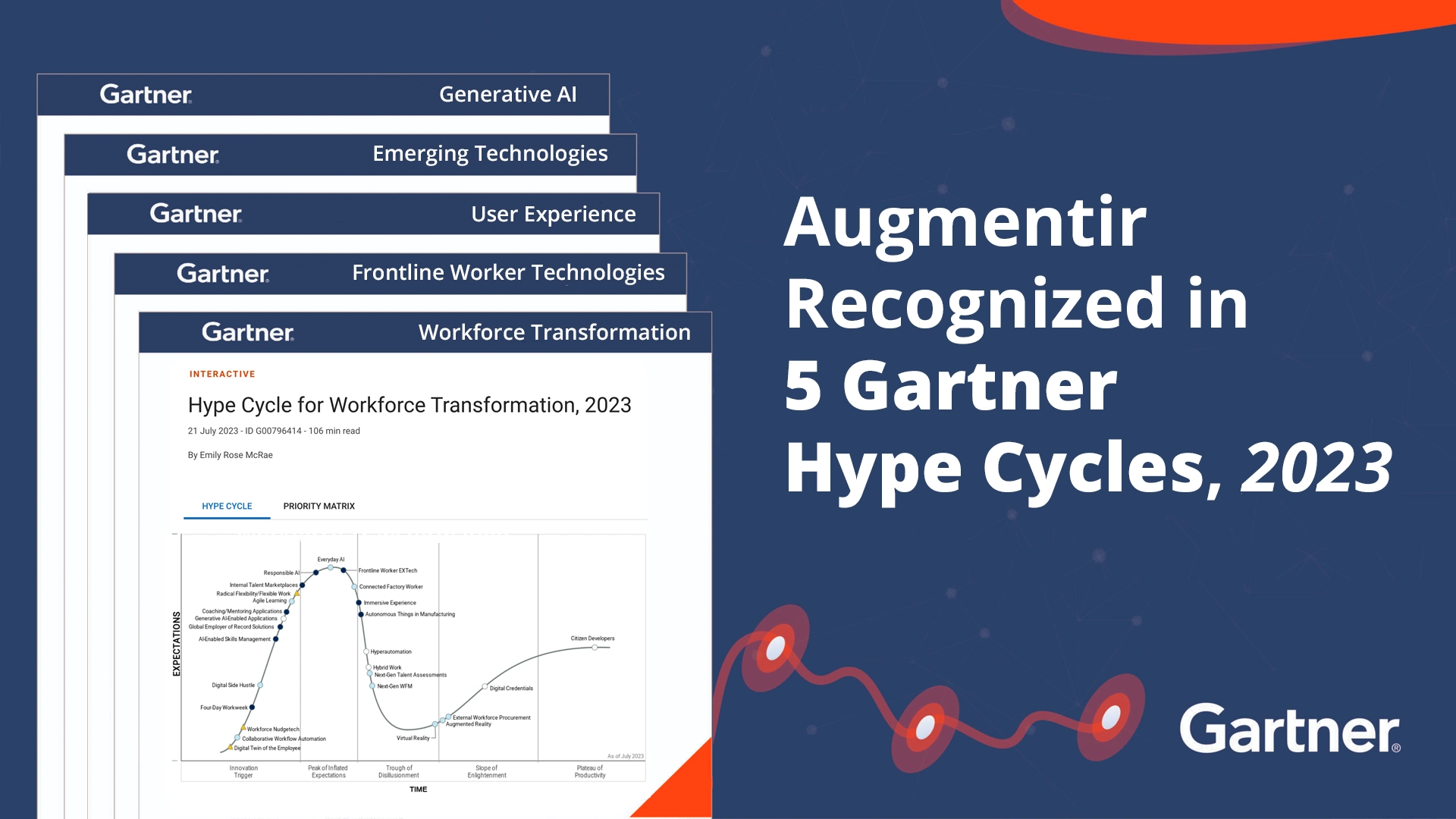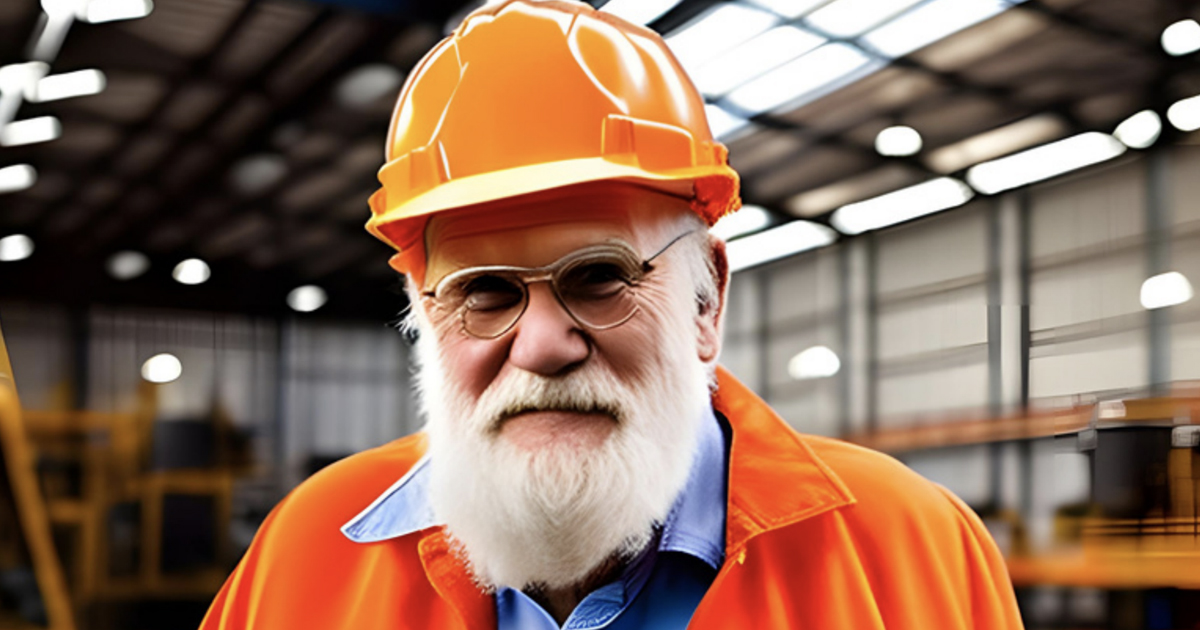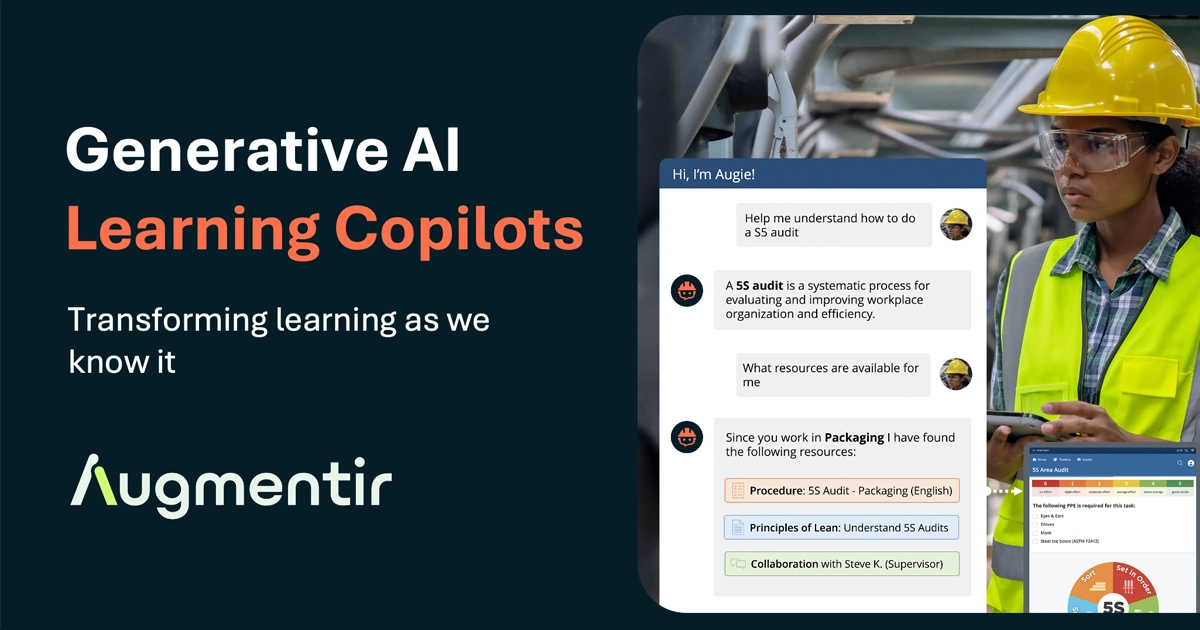You may have noticed that our website and brand look a little different. Augmentir has a new look, but under the hood, its the same powerful AI that is helping to transform the industrial workforce of the future.
You may have noticed that our website and brand look a little different. Well, that’s because behind the scenes for the past few months, we’ve been under construction (no pun intended).
Augmentir was founded in 2018 with the vision to use AI to empower the industrial frontline workforce to perform at their best. This was a continuation of our rich history – our founding team has been at the forefront of three of the most important of these software technology revolutions in manufacturing over the past three decades – Wonderware Software in 1987, Lighthammer in 1997, and ThingWorx in 2008.
A lot has changed since then. The world we live in today is not the same as it was 4 years ago. And in the last two years, the COVID-19 pandemic has altered the stability of the workforce and drastically magnified some of the industry’s top workforce challenges, which stem from the unprecedented levels of dynamism in the areas of skills diversity, reduced tenure, and increased churn from the “Great Resignation”. Unlike the stable and predictable workforce of the recent past, today companies have to live in the new normal where workers are hard to find, hard to engage, and hard to keep.
These top challenges of today have only reinforced the need for an AI-powered, data-driven approach to empowering frontline workers.
This data-driven era we’re entering into is one of continuous learning and development with tools like remote collaboration and digitized work processes truly integrating frontline workers into the fabric of the business from a collaboration standpoint whereas they may have been overlooked before.
Augmentir’s AI-powered connected worker platform provides the tools to not only survive in this new normal but to thrive.
You can’t build a truly modern, connected workforce without AI
The term “connected worker” has become a recent buzzword in the manufacturing world, and is now considered a tool that the new generation of workers expect to work with. But true connected work means using AI to allow frontline workers to have access to internal and external resources that are appropriate for when and how they need them.
Augmentir isn’t your typical connected worker platform. Our platform was built from the ground up on an AI foundation. AI algorithms are ideal for analyzing large amounts of data collected from a connected workforce. AI can detect patterns, find outliers, cleanse data and find correlations and patterns that can be used to identify opportunities for improvement and create a data-driven environment that supports continuous learning and performance support. Our connected worker platform utilizes AI to help train, guide, and support today’s frontline workers in a dynamic workforce by combining digital work instructions, remote collaboration, continuous development and advanced on-the-job training capabilities.
This approach aligns perfectly with the dynamic, changing nature of today’s workforce, and is ideally suited to achieve and sustain effective on-the-job performance.
As the world’s only AI-powered connected worker platform, we decided it was time to refresh our brand identity to accentuate our strongest feature and the thing that makes Augmentir unique – AI. We’re still the same AI-first connected worker platform that you know – just with a new look.




